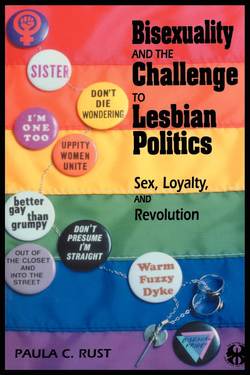Читать книгу Bisexuality and the Challenge to Lesbian Politics - Paula C Rust - Страница 17
На сайте Литреса книга снята с продажи.
THE GREAT DEBATE—ESSENTIALISM VERSUS CONSTRUCTIONISM
ОглавлениеOne of the most fundamental debates among social scientists who study sexuality is the question of whether sexual orientation is essential or constructed. In social and political discourse, we have become so used to referring to people as lesbians, gays, or heterosexuals, that we no longer question whether or not there might be another way to understand our sexual diversity. Many historians argue, however, that the concept of types of people who are defined by their sexual desires or behaviors is recent. The word “homosexual” was coined in 1869 by Benkert. Prior to the late 1800s, there were people who had sex with members of their own sex and people who were attracted to and fell in love with members of their own sex, but historians tell us that these people were not placed in a category and viewed as a certain type of person because of these behaviors or feelings.1 They were simply engaging in some of the many forms of sexual behavior that are possible for humans, just as people today might have sex with brown-eyed or blue-eyed people, and might even have a preference for one eye color or the other, without being placed in categories and assumed to be particular types of people based on the eye colors of their sexual partners.
In other words, historical sexologists argue that the categories “lesbian/gay” and “heterosexual” are socially constructed. We have created these categories, and we place ourselves and each other in them on the basis of our behaviors and feelings. This does not mean that our desires are artificial or that we made them up; it means that we interpret our desires using the concepts and possibilities made available by our culture, and that we perceive our desires as indications of the types of people we are. It also does not mean that lesbian, gay, and heterosexual people do not exist. We certainly do exist, but we exist because we have come to understand ourselves this way. A house is no less real for the fact that it was built; we need shelter, and building a house is a fine way to give ourselves shelter. The longer we live in the house and the more comfortable we become in it, the more difficult it is to remember a time when the house did not exist.2
Essentialists, on the other hand, believe that sexual orientation or sexual desire is a characteristic that exists within a person. An “essence” is real in an absolute sense; it exists even in the absence of cultural interpretation. Essence is the thing that we would see if we could remove all our biases and cultural blinders. When we speak of “discovering” our sexualities, we are thinking in essentialist terms because we are assuming that there was something that existed within us even before we knew about it. When we say that we are lesbian/gay or heterosexual, we imply that we have a lesbian/gay or heterosexual essence, that is, that we are a particular type of person who has a particular type of sexual essence. In doing so, we create a bond between ourselves and other people who have the same essence because we put ourselves in a category together. At the same time, we emphasize our differences from people who have different essences by naming ourselves differently and putting them in another category.
